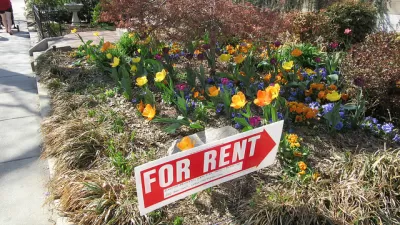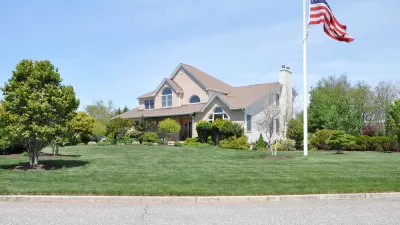Numerous popular and academic writers from the 1950s and 1960s critiqued suburban development patterns and found them wanting.
Amanda Kolson Hurley writes in Curbed about the popular and academic literature from the 1950s and 1960s on the topic of "suburban anomie." Apparently the good old days weren't quite so good after all.
Hurley explains
In the years after World War II, suburbs represented not just new places to live but a whole new manner of living, separated by more than physical distance from the big cities and small towns from which their residents hailed. Between the late 1940s and 1960, millions of Americans moved into raw neighborhoods containing people of about the same age, making about the same amount of money, starting families at about the same time. It was a social experiment unprecedented in U.S. history. The first suburbanites themselves were well aware of this. Although they felt the optimism of pioneers, they shared in the widespread anxiety that the experiment might not work, an anxiety that manifested as worries about unanticipated health effects. These ranged from the daily, cumulative frustrations of a Mary Drone to more significant problems: stomach ulcers, heart attacks, anxiety, depression, sexual dysfunction, and juvenile delinquency.
FULL STORY: Welcome to Disturbia

Maui's Vacation Rental Debate Turns Ugly
Verbal attacks, misinformation campaigns and fistfights plague a high-stakes debate to convert thousands of vacation rentals into long-term housing.

Planetizen Federal Action Tracker
A weekly monitor of how Trump’s orders and actions are impacting planners and planning in America.

San Francisco Suspends Traffic Calming Amidst Record Deaths
Citing “a challenging fiscal landscape,” the city will cease the program on the heels of 42 traffic deaths, including 24 pedestrians.

Defunct Pittsburgh Power Plant to Become Residential Tower
A decommissioned steam heat plant will be redeveloped into almost 100 affordable housing units.

Trump Prompts Restructuring of Transportation Research Board in “Unprecedented Overreach”
The TRB has eliminated more than half of its committees including those focused on climate, equity, and cities.

Amtrak Rolls Out New Orleans to Alabama “Mardi Gras” Train
The new service will operate morning and evening departures between Mobile and New Orleans.
Urban Design for Planners 1: Software Tools
This six-course series explores essential urban design concepts using open source software and equips planners with the tools they need to participate fully in the urban design process.
Planning for Universal Design
Learn the tools for implementing Universal Design in planning regulations.
Heyer Gruel & Associates PA
JM Goldson LLC
Custer County Colorado
City of Camden Redevelopment Agency
City of Astoria
Transportation Research & Education Center (TREC) at Portland State University
Jefferson Parish Government
Camden Redevelopment Agency
City of Claremont





























